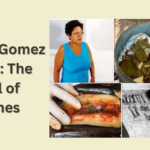What You Need to Know and How to Solve It?
If you’ve recently had your wisdom teeth removed, you might be familiar with the discomfort of food getting stuck in the extraction site. It’s not only annoying but can also lead to complications if not handled correctly. This comprehensive guide will walk you through why food gets trapped in a wisdom tooth hole, how to safely clean it out, and tips to promote faster healing. Whether you’re dealing with this problem today or just want to prevent future headaches, we’ve got you covered.
Why Does Food Get Stuck in a Wisdom Tooth Hole?
When a wisdom tooth is removed, your body creates a socket or hole in the gum. This is a normal part of the healing process, but until the tissue grows back and closes the space, it’s prone to catching food particles. The location of wisdom teeth, at the back of your mouth, also makes it harder to clean thoroughly.
Other contributing factors include:
- Large extraction hole size: The bigger the gap, the easier it is for food to settle inside.
- Chewing habits: If you primarily chew on one side of your mouth, you might unknowingly push food into the socket.
- Sticky or small foods: Foods like rice, seeds, or pasta are more likely to lodge in the hole.
The Risks of Food Staying in the Extraction Site
It might not seem like a big deal to leave food particles in the socket, but doing so can lead to several issues:
- Bacterial growth: Leftover food creates an ideal environment for bacteria, increasing the risk of infection.
- Dry socket: If the blood clot protecting the socket dislodges due to improper cleaning, you risk developing a painful condition known as dry socket.
- Bad breath or foul taste: Decaying food trapped in the hole can cause bad breath and an unpleasant taste in your mouth.
Knowing the risks highlights why proper aftercare and cleaning are so important.
How to Safely Remove Food from a Wisdom Tooth Hole?
-
Use a Saltwater Rinse
Saltwater rinses are one of the safest and easiest ways to clean out food debris. Mix half a teaspoon of salt into a glass of warm water and gently swish it around your mouth. Focus on the affected area, but don’t use too much force as it could dislodge the blood clot.
Pro Tip: Use this rinse 3-4 times daily, especially after meals, to keep the area clean.
-
Try an Irrigation Syringe
An irrigation syringe is a small medical tool with a curved tip, designed to flush out debris from hard-to-reach areas. Fill it with warm water or saltwater, and gently rinse the socket while applying light pressure.
Important: Wait until your dentist advises using a syringe, usually after the first week post-surgery. Using it prematurely may cause more harm than good.
-
Avoid Regular Brushing on the Socket
While maintaining your oral hygiene is crucial, avoid brushing directly over the wisdom tooth hole. Instead, gently clean the surrounding teeth with a soft-bristled toothbrush to prevent bacteria buildup.
-
Stick to a Soft Diet
Eating soft foods reduces the likelihood of food particles getting stuck. Soups, smoothies, mashed potatoes, and yogurt are excellent options during the initial healing phase. Gradually reintroduce harder foods as the socket begins to close.
-
Avoid Straws and Forceful Spitting
Straws and forceful spitting can create pressure that dislodges the protective blood clot in the socket. Stick to drinking from a cup and spit gently if needed.
What to Avoid When Removing Food?
It’s important to approach cleaning the socket with care. Here are some things you should absolutely avoid:
- Poking with sharp objects: Using toothpicks, tweezers, or any sharp object to remove food can damage the tissue and increase your risk of infection.
- Rinsing aggressively: Forceful swishing can disrupt the healing process.
- Over-cleaning: Overdoing it can irritate the area, so stick to your dentist’s recommended care routine.
How to Prevent Food from Getting Stuck?
An ounce of prevention is worth a pound of cure. Consider these tips to avoid food accumulation in the first place:
- Rinse after every meal: Even if you don’t see or feel food, rinsing can prevent buildup.
- Chew on the opposite side: Place food on the side of your mouth opposite the extraction site.
- Elevate your head while sleeping: This can help prevent food from migrating into the hole overnight.
- Avoid sticky or crumbly foods: Steer clear of rice, popcorn, and similar items until the socket heals.
When to Call Your Dentist?
Sometimes, despite your best efforts, the site can become irritated or infected. Call your dentist if you notice any of the following:
- Persistent pain or swelling after a week.
- A bad odor or discharge from the site.
- Symptoms of dry socket, such as extreme pain or an exposed bone.
Your dentist may recommend additional treatments like antibiotics or an in-office cleaning to get things back on track.
The Healing Process Timeline
Typical healing after wisdom tooth extraction takes about 2-3 weeks, depending on your oral hygiene and overall health. Here’s a rough timeline:
Day 1-3: Swelling and discomfort are common; avoid all solid foods.
Week 1: Blood clot stabilizes, and you can start rinsing gently.
Week 2-3: The tissue begins forming over the hole. Food trapping may still occur but should minimize.
Week 4: Most holes are significantly smaller or fully closed.
Stay patient and follow your dentist’s aftercare instructions to promote smooth healing.
Final Thoughts and Next Steps
Getting food stuck in a wisdom tooth hole can be a frustration, but with proper care, it’s manageable. Remember to use safe cleaning methods like saltwater rinses, eat soft foods, and avoid risky behaviors like poking or spitting aggressively. Always keep an eye out for signs of infection, and don’t hesitate to reach out to your dentist if you’re unsure about your symptoms.
Call to Action
Have questions about your oral health or wisdom tooth recovery? Schedule a check-up with your dentist today to get professional advice tailored to you. Proper care today means a healthier smile tomorrow!






